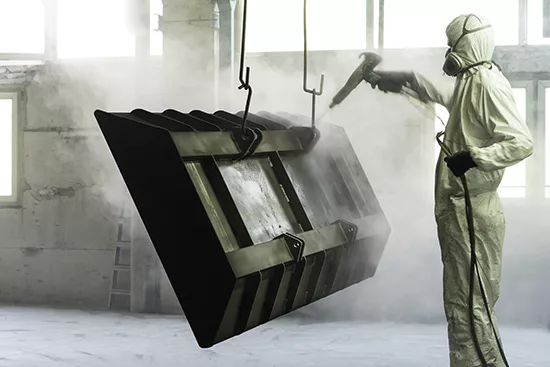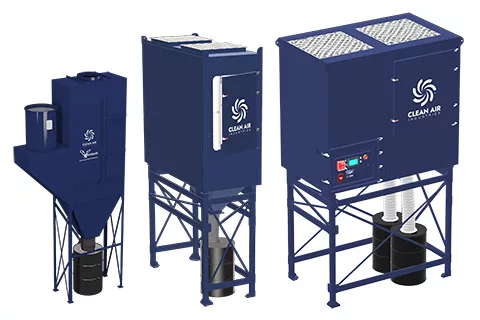ABRASIVE BLASTING
What is Abrasive Blasting?
 Abrasive blasting, often referred to as sandblasting, is a powerful technique used in various manufacturing processes. It involves propelling a stream of abrasive material against a surface under high pressure. This method is employed for cleaning, smoothing, or shaping a surface – typically in preparation for painting or other treatments.
Abrasive blasting, often referred to as sandblasting, is a powerful technique used in various manufacturing processes. It involves propelling a stream of abrasive material against a surface under high pressure. This method is employed for cleaning, smoothing, or shaping a surface – typically in preparation for painting or other treatments.
Abrasive blasting uses materials like sand, glass beads, or steel grit to remove contaminants or achieve a desired surface texture. This process is common in industries such as automotive, shipbuilding, and construction.
The choice of abrasive material depends on the nature of the job and the desired outcome.
Hazards and Indoor Air Quality
The primary health concern in abrasive blasting is the inhalation of dust and particles. These can include:
- Silica Dust: Common in sandblasting, silica dust can lead to serious lung diseases like silicosis.
- Toxic Metals: Blasting materials may contain heavy metals like lead or chromium, posing significant health risks.
- Particulate Matter: Fine particles can penetrate deep into the lungs, causing short and long-term respiratory issues.
Improving Indoor Air Quality
To mitigate the health risks and improve air quality, facilities can implement several strategies:
- Training and Awareness: Educating employees about the risks and safe practices in abrasive blasting is an essential first step in maintaining a healthy work environment.
- Personal Protective Equipment (PPE): Providing workers with appropriate PPE, such as respirators and protective clothing, is crucial.
- Air Filtration Systems: Installing proper air filtration systems helps in effectively removing airborne particles. These systems should be designed to capture dust at the source and prevent it from spreading.
- Regular Monitoring: Conducting regular air quality assessments ensures that the levels of particulates are within safe limits.
- Enclosed Blasting Areas: An enclosed blasting area, such as an environmental booth, helps contain the spread of dust and particles.
- Regular Maintenance and Cleaning: Regular maintenance of equipment and thorough cleaning of the work area reduce the accumulation of hazardous materials.
Abrasive blasting is a vital process in many manufacturing industries, but it carries significant health risks, primarily due to its impact on indoor air quality. By understanding these risks and implementing effective control measures, facilities can ensure a safer working environment and protect the health of their employees. As technology advances, exploring newer, less hazardous blasting methods and materials will be key to further reducing these risks.
Clean Air Solutions for Abrasive Blasting

Environmental Booths
Welding, Grinding & Blasting
Durable and reliable, environmental booths are a self-contained, highly-customizable solution for welding, grinding, and more.
Learn More
Central Collectors
Up to 65,000 CFM Airflow
Ruggedly designed for heavy-duty use, providing effective solutions for centralized fume and dust collection.
Learn More